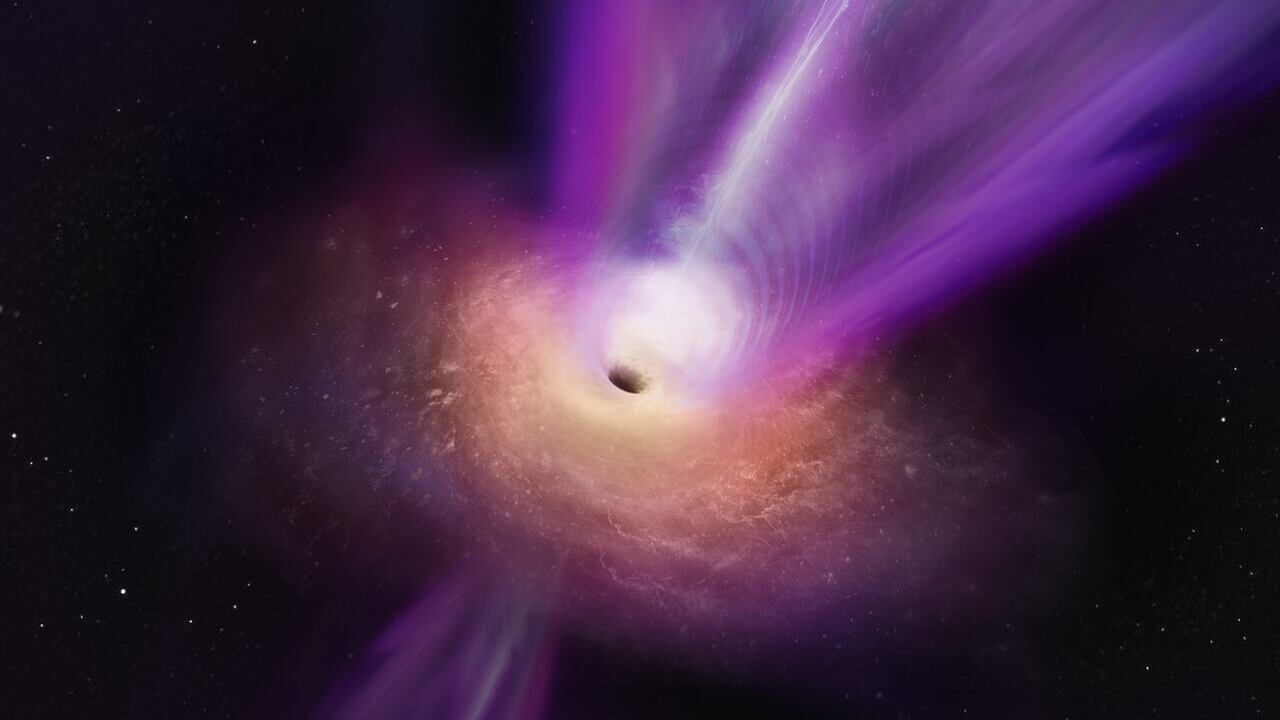A supermassive black hole at the center of a galaxy launched a powerful jet of matter away from it—and astronomers caught it on camera.
Specifically, researchers spotted the jet being launched from the black hole at the center of the Messier 87 (M87) galaxy (i.e. the first black hole to ever be photographed) in 2018 using the Global Millimetre VLBI Array (GMVA), the Atacama Large Millimeter/submillimeter Array (ALMA), and the Greenland Telescope. Check it out in all its epic glory below:

The jet and shadow of the black hole at the center of the M87 galaxy shown together for the first time.
R.-S. Lu (SHAO), E. Ros (MPIfR),Don’t let the blurriness fool you. The pic actually shows a massive and powerful jet of energy and matter being shot out at nearly the speed of light from the supermassive black hole. These jets, also known as tidal disruption events (TDEs), occur after black holes consume celestial objects like stars and planets.
Also, keep in mind that M87 is roughly 55 million lightyears away from our solar system. While previous observations of M87 have revealed the black hole and the jet separately, this marks the first time they’ve been seen and imaged together. Researchers say that this presents a very unique opportunity to study how exactly these jets form and what goes one when they’re expelled from black holes.
“We know that jets are ejected from the region surrounding black holes, but we still do not fully understand how this actually happens,” Ru-Sen Lu, an astronomer from the Shanghai Astronomical Observatory in China who was involved in capturing the image, said in a statement. “To study this directly we need to observe the origin of the jet as close as possible to the black hole.”
In the image, you can see the jet connected to the swirling chaos of matter around the black hole. As M87 continues to consume celestial bodies around it, this matter turns into energy and appears as a bright ring around the inky blackness of the hole itself. In images, this appears as a bright orange ring around the black hole.
The team behind the image now hope that future research will look into the exact mechanics behind the TDE and why they occur. For now, the rest of us can settle for these amazing images in the meantime.






